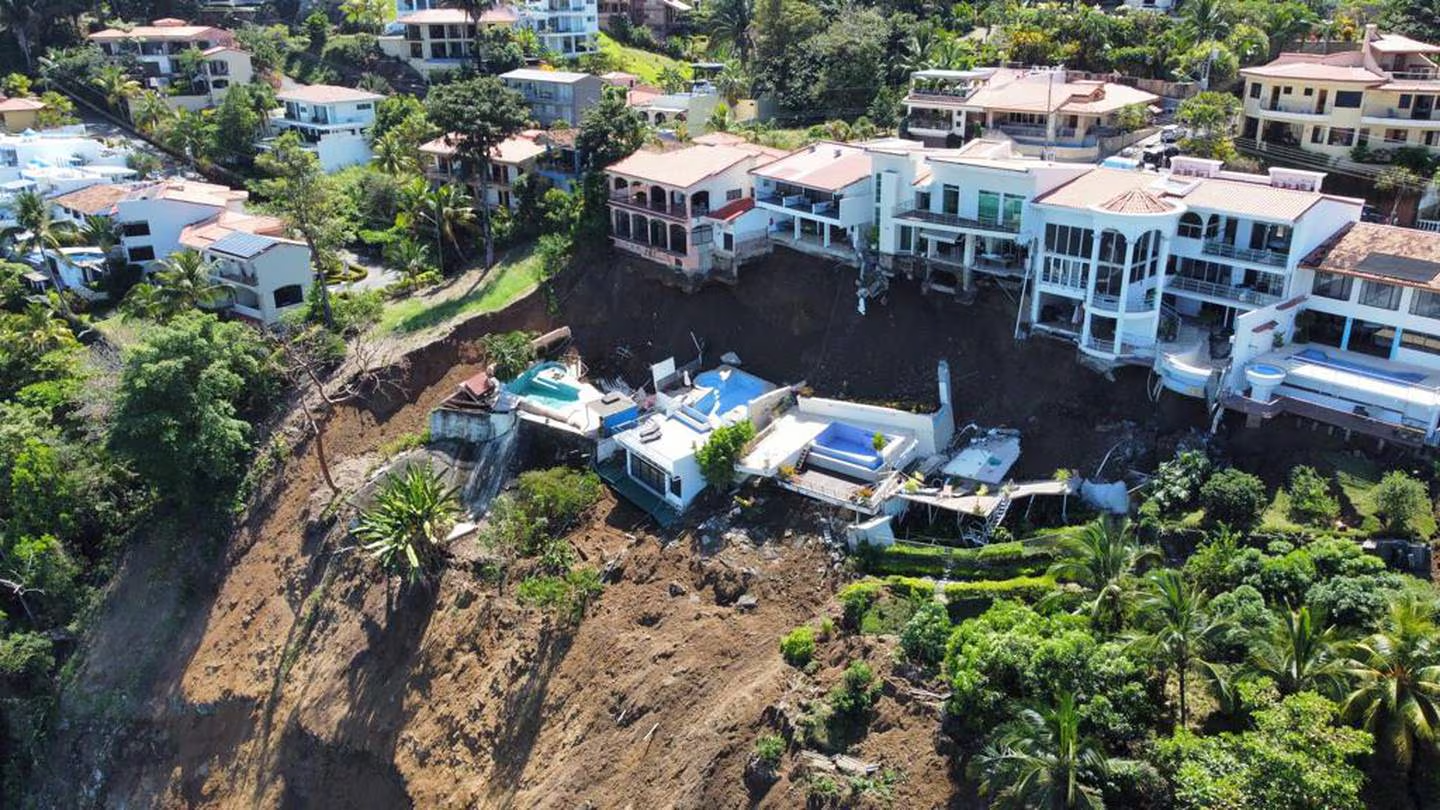In a dramatic turn of events, the lush landscape of Puntarenas, known for its breathtaking vistas and luxury residences, has transformed into a financial landslide for the National Insurance Institute (INS) of Costa Rica. In the past year, the province witnessed an extraordinary 150% spike in insurance payouts, largely due to the catastrophic collapse of cliffside luxury homes in Punta Leona and severe flooding across the region.
High Stakes in High Places
The serene coastal enclave of Altos de Leonamar in Punta Leona, once the epitome of high-end living, became a scene of devastation early last year. In February 2023, a calamitous event saw five luxury mansions, valued for their panoramic ocean views, plunge from the cliffs they perched on, leading to total losses. This disaster was precipitated by a 4.6 magnitude earthquake that, according to preliminary geological assessments, exacerbated the instability of an already fragile cliffside.
The Torrent of Insurance Claims
In the wake of these collapses, the INS was inundated with claims. March alone saw payouts reaching a staggering ₡673.7 million ($1.1 million). The specifics of these payouts remain under wraps due to confidentiality agreements, but the magnitude of the financial impact is clear. The INS’s total disbursements for such incidents in Puntarenas amounted to ₡1.068 billion (approximately $1.75 million), representing a significant chunk of the ₡1.784 billion ($2.92 million) doled out nationally for disaster-related claims.
Floods Follow Suit
Not to be outdone by landslides, seasonal rains brought extensive flooding, further straining the resources of the INS. Significant property and commercial damage ensued, with floodwaters inundating homes, businesses, and major thoroughfares like the bustling Jacó Walk shopping center. These floods not only wreaked havoc on local infrastructure but also contributed to the substantial increase in insurance claims.
A Silver Lining?
Despite the dire circumstances, there’s a glimmer of hope. Alexander Sancho, the administrator of the stricken Altos de Leonamar condominium, noted that the disaster area was highly localized. The majority of the terrain remains on stable rock, which may prevent future mishaps in unaffected areas of the development. Additionally, efforts are underway to reinforce and rehabilitate the damaged properties, though the challenges of working on steep, nearly vertical slopes complicate recovery efforts.
The alarming increase in natural disasters and the consequent financial burden on the INS have prompted calls for more stringent measures to manage and mitigate such risks. The overwhelming payouts in 2023 underscore the urgent need for comprehensive land use planning and stricter enforcement of building codes, especially in areas prone to landslides and flooding.
As Puntarenas and the rest of Costa Rica brace for another rainy season, the specter of further destruction looms large. However, with proactive measures and continued vigilance, the resilience of its people and the strategic response of institutions like the INS may yet safeguard this paradise against the caprices of nature.

